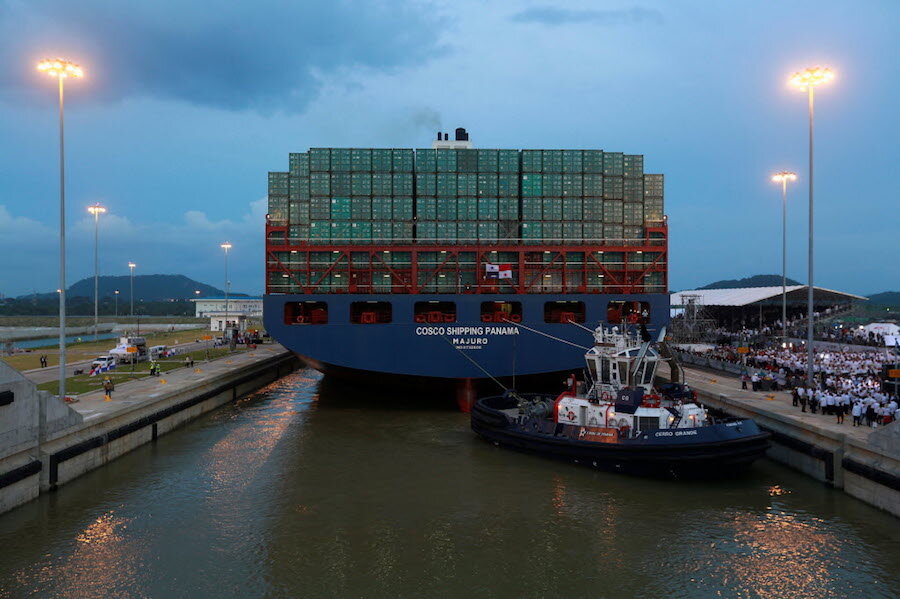The new and improved Panama Canal: How will it affect US businesses?
Loading...
The newly widened Panama Canal could rewrite how fuel extracted in the US traverses the globe.
The canal expansion opened on June 26 with a third lane that accommodates big ships such as liquified natural gas (LNG) ships, 90 percent of which may now travel across the canal, including those that hold as much as 3.9 billion cubic feet (Bcf) of fuel, according to a report from the US Energy Information Administration released June 30.
Along with a new lane, the canal has enlarged its locks that are 180 feet wide and 60 feet deep, compared to the 110-foot wide and 42-foot deep 1914 canal. The project cost a total of $5.25 billion.
The previous canal allowed just 6 percent of the current global fleet, or 30 of the smallest LNG tankers who could carry up to 0.7 Bcf of fuel, the report claims. The reduced travel time and transportation costs for LNG shipments could help United States natural gas exports to northern Asia. With the United States’ natural gas economy growing to the world’s third-largest LNG producer by 2020, the expansion could be a new favorite route.
“The expansion of the Panama Canal will have significant impacts on shipping routes, port development, and cargo distribution,” reported the Army Corps of Engineers in 2008.
The canal will reduce the voyage time from the US Gulf Coast to 20 days, down from 34 days around Africa or 31 days through the Suez canal. The new route will also reduce travel time to Chile from 20 days to eight or nine days and to Colombia and Ecuador from 25 to five days, according to the Energy Information Administration. Transportation costs will also decrease through the canal with a new system that encourages LNG traffic.
At the opening, Panamanian President, Juan Carlos Varela, said: "Our commitment to provide value to our customers remains paramount. Today, we make history and improve global connectivity. We thank our customers for their support and appreciate the 170 reservations we have received thus far to transit the expanded canal."
Although the Canal will be a cheaper and faster option, competing with other traffic could prove troublesome, Michael Hinrichs of Veresen Inc. – which is hoping to build the Jordan Cove LNG terminal and storage facility – told The Daily Sentinel of Grand Junction, Colorado.
Demand to cross the quicker and cheaper route may make queues long and delay shipment, he said. The “supply chain is more about reliability than transit time,” South Carolina Ports Authority chief executive James I. Newsome III told The Washington Post.
Despite some uncertainty, the updated canal will give US companies an incentive to expand East Coast ports. “We’re evaluating how the Panama Canal might change shipping patterns to the Gulf Coast ports,” Rob O’Brian, president of the Joplin, Mo., Chamber of Commerce, told Inbound Logistics. “The expansion presents an opportunity for shippers to better utilize the middle part of the country, take advantage of rail and highway network that connects with the ports.”








